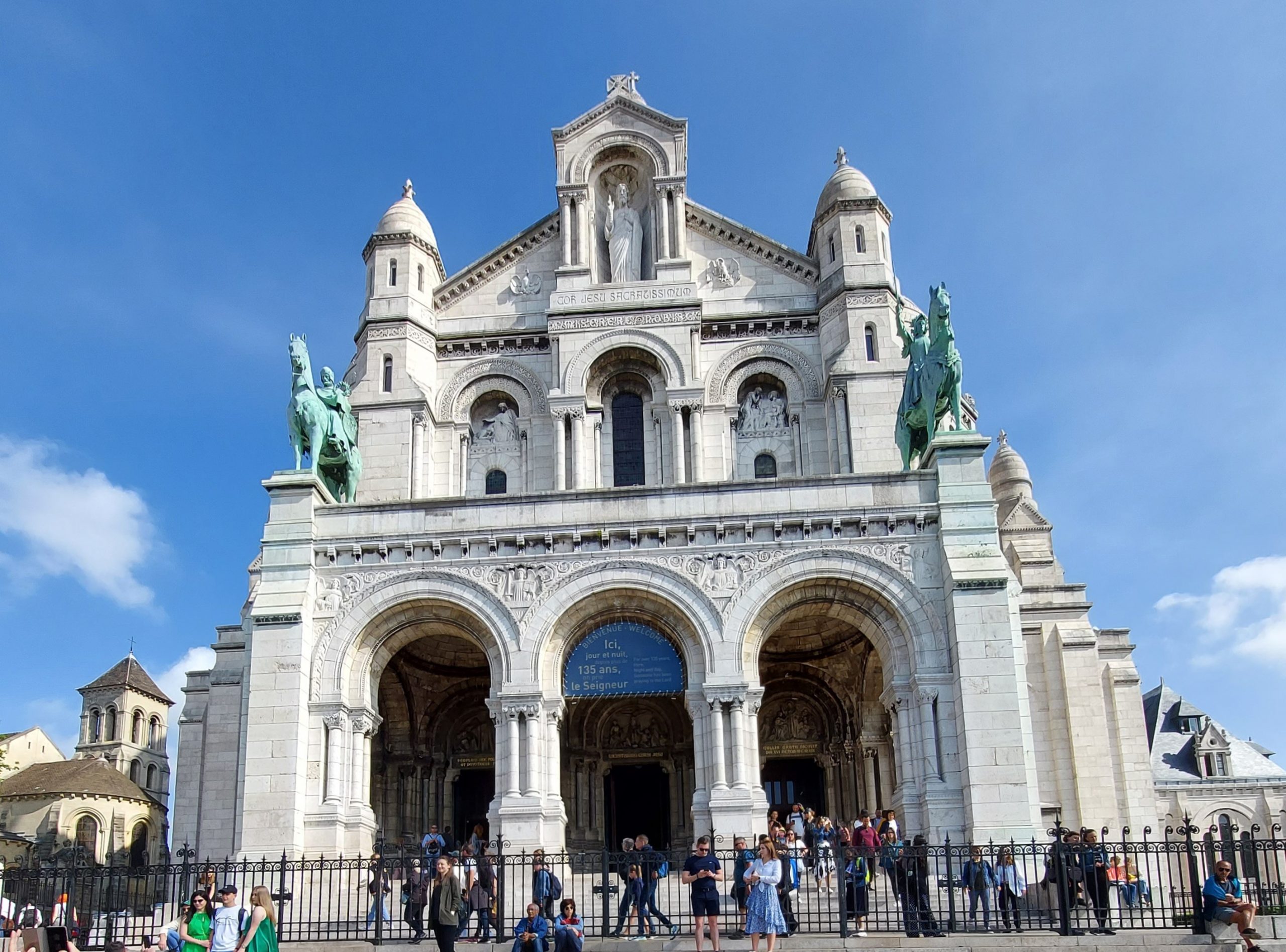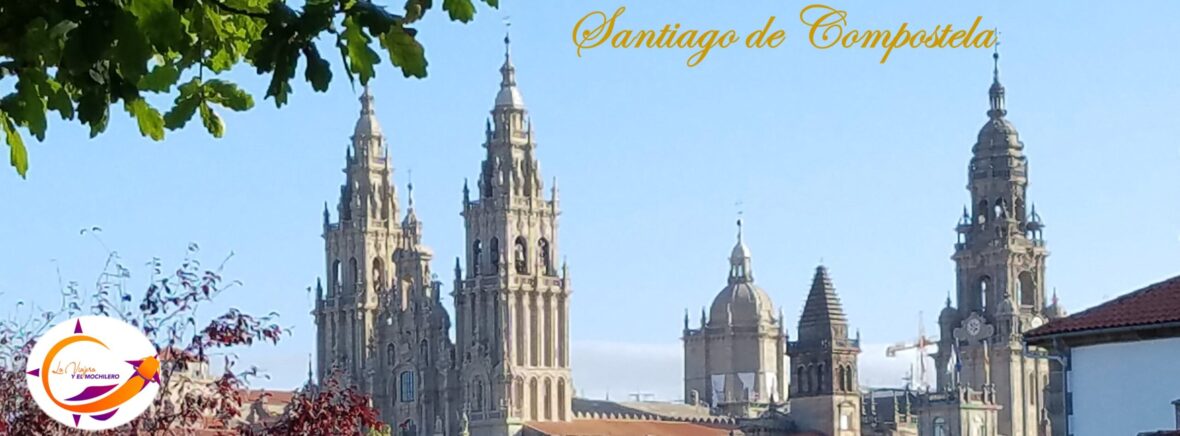
One of the structures we could spotted in visiting the top of the Arc de Triomphe and the Eiffel Tower was the “Sacré-Cœur Basilica”, or Basilica of the Sacred Heart. Its huge dome can be seen from different points in Paris.

The “Sacré-Coeur Basilica” was built between 1875 and 1914 on the hill of the martyrs, Montmartre, a hill 130 meters high, in Clignancourt, XVIIIth arrondissement of Paris. This was the place where Saint Denis, first Bishop of Paris (3rd century), was beheaded for his faith. It is then that in 1919, the basilica is consecrated to the catholic cult and dedicated to the Sacred Heart.

Its construction was decided by the National Assembly in 1873, as a religious building in perpetuity as a tribute to the memory of the many French citizens who lost their lives during the Franco-Prussian War.

In 1885, the church became a sanctuary of perpetual prayer by night as well as by day. Thus, for more than 130 years, the perpetual exposition of the Blessed Sacrament has marked the prayer life of the basilica in a characteristic way, even before the completion of its construction.

To select the architect who would design the Sacré-Coeur Basilica, a contest was held. Paul Abadie won the competition for its construction. The first stone was laid in 1875, and although it was completed in 1914, it was not consecrated until the end of World War I in 1919. Its style is Byzantine Gothic.

Travertine stone, a sedimentary rock that constantly “sweats” calcite, was used to build this magnificent Catholic church, ensuring the building’s permanent whiteness despite erosion and pollution. Calcite is the primary calcium mineral, indispensable in the construction industry. It reacts especially under rain, which is why in those areas that are protected from water, the stone looks a little darker.

The construction of this building generated a lot of controversy anda colossal foundation was needed to be able to support the structure. They had to open 83 wells of 38 meters to ensure the building would be solid.

The dimensions of the “Sacré-Coeur Basilica” are monumental: 83 meters long, 35 meters wide and a tower 83 meters high. The plan of the building is in the form of a Greek cross, adorned with four domes: the central dome, 80 meters high, is touched by a lantern, formed by a colonnade. In the apse, an immense square tower serves as a bell tower that houses the Savoyarde, a bell 3 meters in diameter and weighing 18,550 kg, offered by the diocese of Chambéry. It is the largest bell in France and one of the heaviest in the world.

We paused for a moment at the main facade of the Sacré-Coeur Basilica. It has a portico with three arches, as guardians, two of the most important historical figures of France: King Saint Louis and Joan of Arc, both equestrian statues are the work of Hippolyte Lefebrre.

In the central niche of the façade is a stone statue of the Sacred Heart which is 5 meters high and is the work of Pierre Séguin. This statue of Jesus bears an inscription that reads: “Cor Jesu Sacratissimum Jesu” (“Heart of Jesus, Sacred Jesus”). In this main portal there are bronze doors with a varied vegetal ornamentation. The details of the reliefs under the portico show us the life of Jesus, especially the theme of the Last Supper.

Its architecture is inspired by Roman and Byzantine architecture. However, it is the mosaic located in the vault of the presbytery, which attracts our attention, dominating the room with its brightness. No wonder, we are talking about the largest mosaic in the world.

These mosaics are the work of Luc-Oliver Merson, made in 1922. It measures 475 square meters and the work depicts the “Risen Christ”, the actual name being, “Christ in Majesty and the Sacred Heart adored by the Virgin Mary, Joan of Arc and the Archangel St. Michael”.

It is by walking around the High Altar that we can see the decorative details of the architecture of the “Sacré-Coeur Basilica”, where through openings we can observe the details of the great mosaic of the vault of the presbytery.

Its main altar is made of bronze, it is made in the likeness of the abbey of Cluny in Burgundy and since 1885 the Blessed Sacrament has remained on this altar.

The large stained glass windows had to be restored in 1946 since they were destroyed during the war. It is these works of glass that give the church greater illumination and color.

The pipe organ of the “Sacré-Coeur Basilica” in Paris is one of the most important in France and in Europe. It is the last great work of its builder, Aristide Cavaillé-Coll.

One of the most curious sites to visit in the Basilica is its crypt, which is located under the main nave. It is here that rest the remains of the bishops who contributed to the construction of the Sacred Heart.

You can climb the hill with its nearly 200 steps to the foot of the cathedral, or by using the Montmartre Funicular. We preferred climbing the steps, which was bearable and allowed us to stop at certain points to admire the “Sacré-Coeur Basilica” from other angles. Besides, the panoramic views are great.

Resources:
https://es.wikipedia.org/wiki/Bas%C3%ADlica_del_Sagrado_Coraz%C3%B3n_(Par%C3%ADs)
https://buendiatours.com/es/guias/paris/sacre-coeur
https://www.sacre-coeur-montmartre.com/espagnol/la-basilica-del-sagrado-corazon-de/article/el-sagrado-corazon
https://www.paris.es/basilica-sagrado-corazon

